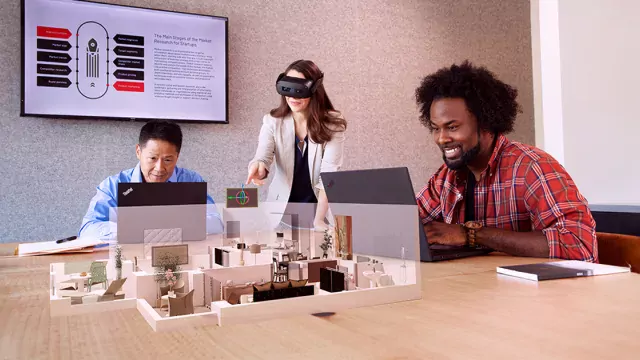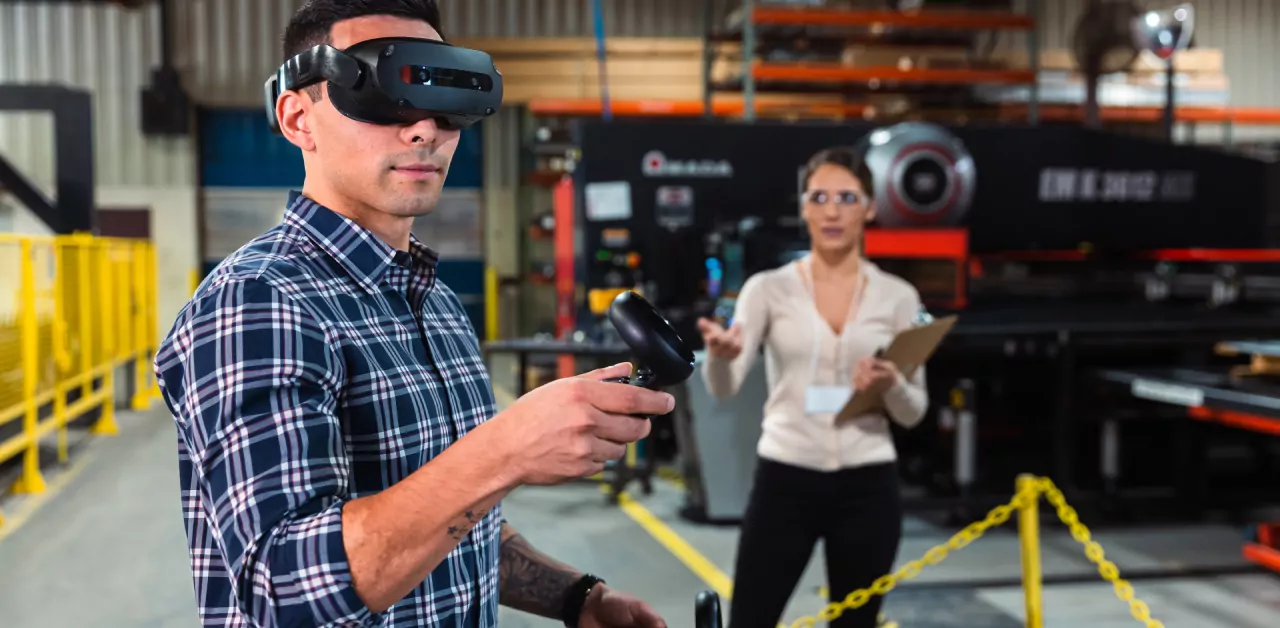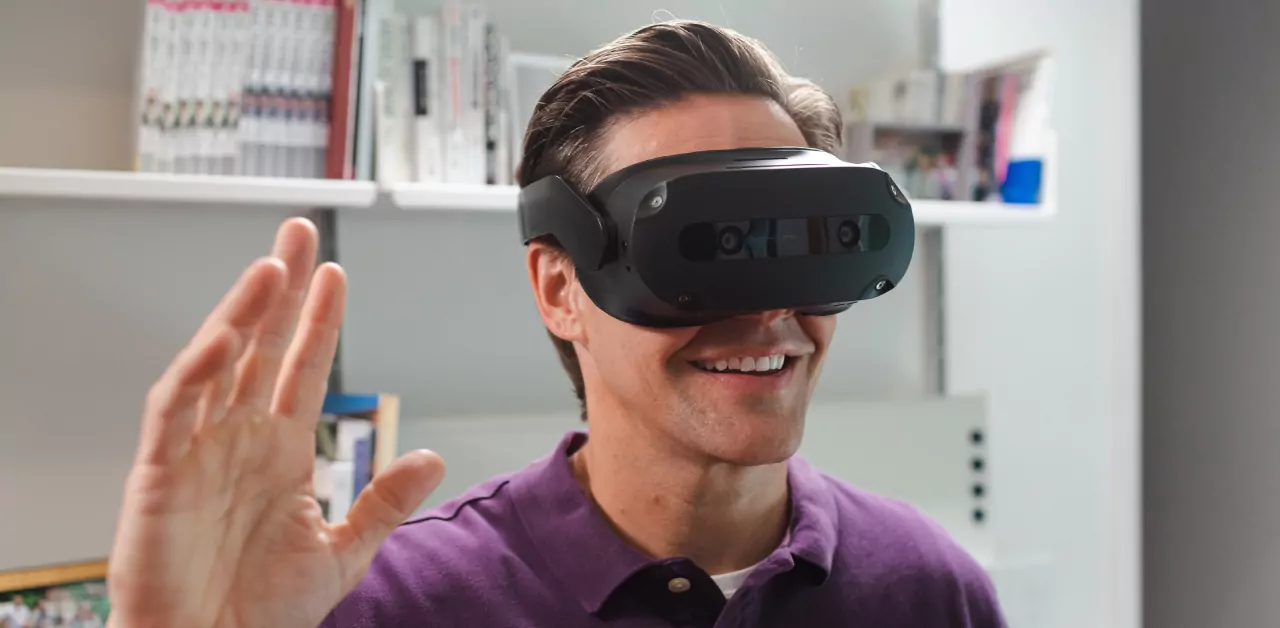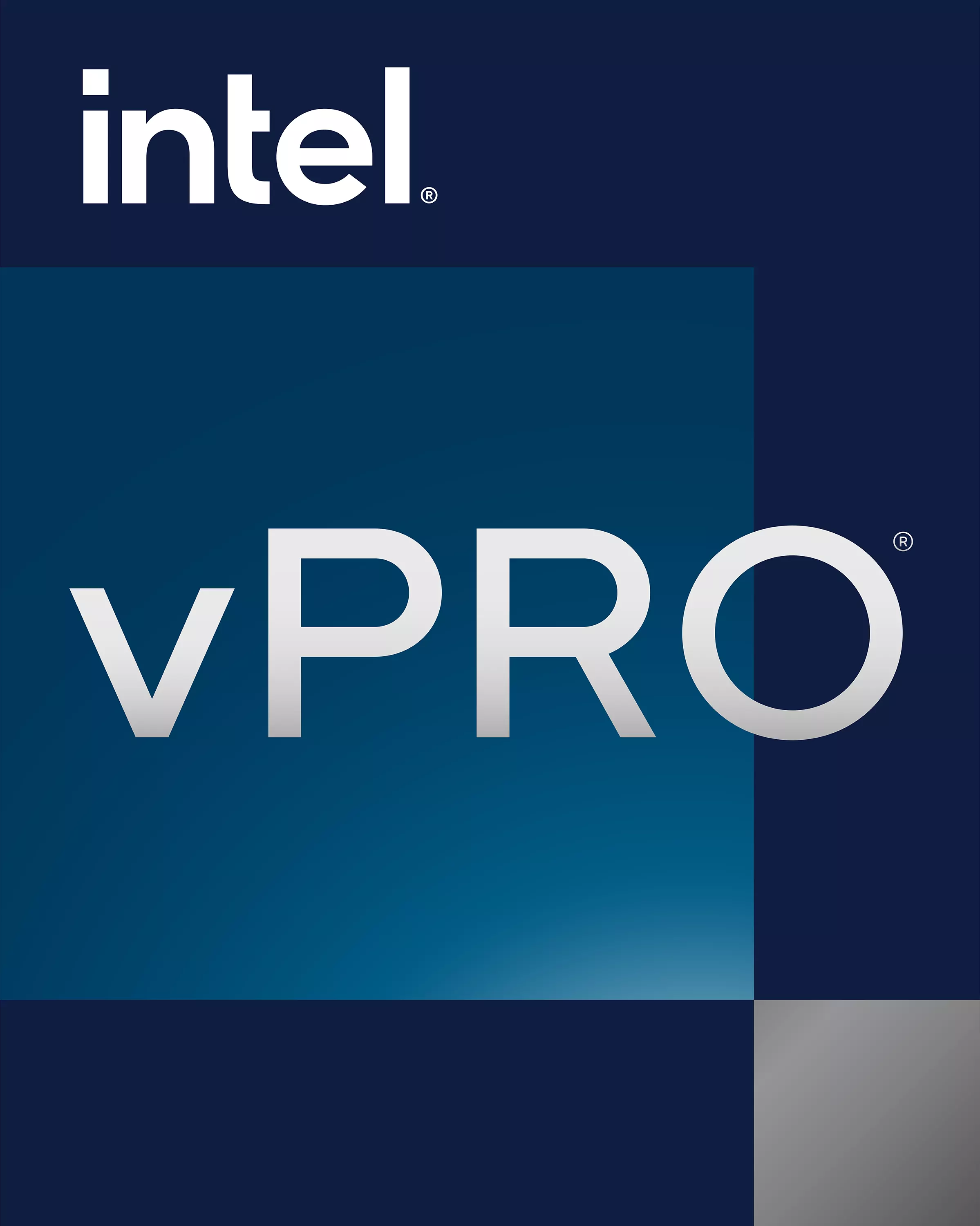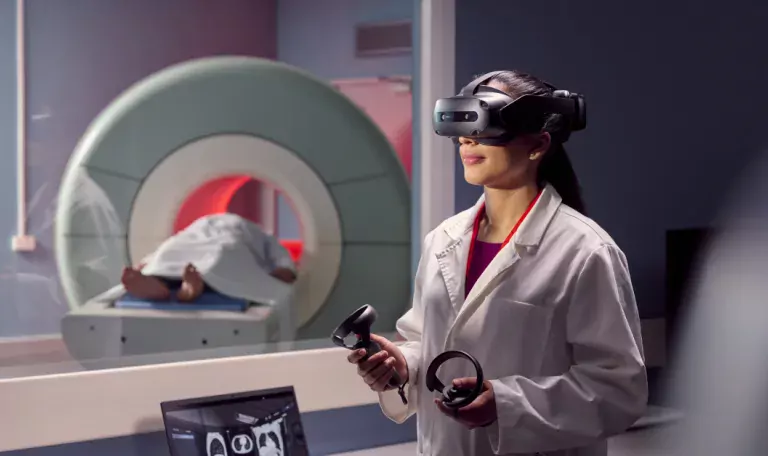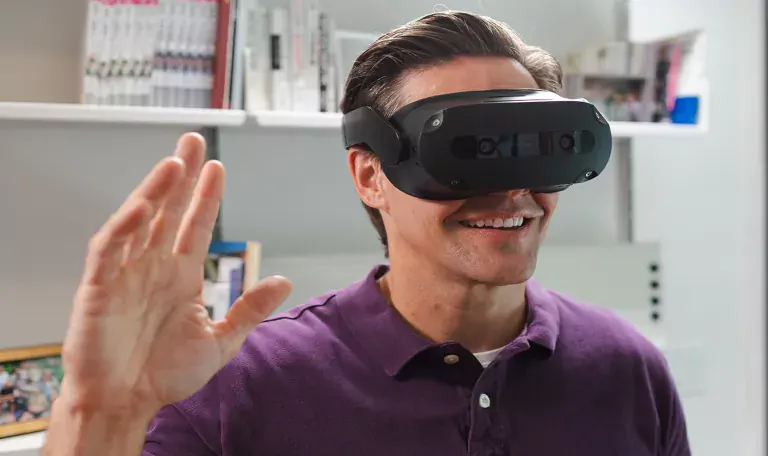The clear case for virtual reality in enterprise organizations
Organizations today are witnessing practical, ROI-driven results with virtual reality (VR) and augmented reality (AR) — collectively described as mixed reality (MR). With the introduction of the metaverse and advanced headsets engineered specifically for enterprise use, that’s only going to accelerate.
In fact, 91% of businesses are already using or planning to adopt AR/VR technology.1 And the AR/VR marketplace is expected to maintain double-digit growth2 as enterprise organizations are discovering the potential these technologies offer.
In this article, we’ll explore three key areas where VR technology is improving processes and productivity for employees in a wide range of roles.
1. Training: Faster, more versatile, and more cost-effective
As businesses in all industries seek to upskill and multiskill current workers to new levels, employee training is becoming more important than ever. Having the right training solutions in place not only improves employee performance day to day, but it can also serve as an incentive for attracting and retaining top talent.
Virtual reality is proving to be an extremely effective tool for employee training — especially in hybrid work settings. A recent Price Waterhouse study found that when training on soft skills such as customer service, leadership, or HR tasks, employees completed VR programs up to four times faster compared to classroom learning.3 But speed wasn’t the only benefit — employees also felt 275% more confident in applying the skills they learned after VR training, and they were four times more focused than their peers.3
The ability to train in a virtual environment also presents new opportunities for employees to learn technical skills in situations with high-risk environments (e.g., dangerous machinery or hazardous substances). With the introduction of devices that offer six degrees of freedom (6DoF), users can move about freely to interact with virtual training environments, creating a more realistic and immersive experience that better prepares employees for real-world applications. One recent study showed that companies in high-risk industries experienced a 43% reduction in workplace injuries after implementing VR training.4
When it comes to cost savings, VR training can provide immediate benefits in terms of reducing the time and travel required, but the real efficiencies come into play when the training can be scaled effectively. According to the Price Waterhouse study on soft skills training3, when compared to classroom learning, VR training was:
• 52% more effective at 3,000 learners
• 58% more effective at 6,000 learners
• 64% more effective at 10,000 learners
It’s important to note that long sessions of VR training can come with their own risks of user fatigue from wearing the headsets. Fortunately, advances in technology have allowed for the development of lighter, more compact, more comfortable headsets for enterprise applications. And these design improvements can also help accommodate a more diverse population of users.
2. Collaboration: More immersive, more productive, and more engaging
Hybrid work has made remote collaboration a way of life in the modern workplace. Not that long ago, videoconferencing was an expensive privilege found only in executive boardrooms. Now, it’s a big part of the average employee’s day. Among workers worldwide, 80% are using digital collaboration tools.5
While there are many ongoing discussions about the metaverse happening today (“Is it really here? If not, when? And what will it end up being?”), there’s no question that virtual reality technology is creating entirely new opportunities to go far beyond videoconferencing and include shared experiences. It’s estimated that there may be five billion metaverse users by 2030.6
With VR collaboration, users can share and interact with 3D models and renderings in ways never before possible. Digital twins become interactive experiences for manufacturing, healthcare, retail, and other human-centric industries. Collaborating in VR can also help create a more equitable environment where everyone shares the same experience regardless of whether they’re remote or in person. And by eliminating the need for travel, VR collaboration can help organizations reduce their overall carbon emissions.
One of the newer technologies that’s making VR collaboration more practical and productive is the inclusion of passthrough video. Forward-facing cameras on modern VR headsets enable users to instantly switch between the virtual environment and the real-world environment without removing the headset. Passthrough video on VR headsets also enables mixed reality experiences where virtual elements are overlaid or blended with the physical world around the user.
3. Engineering and design: More powerful, more effective, and more agile
Computer-aided design (CAD) and computer-aided engineering (CAE) are ideal applications for VR technology. In a virtual space, designers and engineers can easily visualize designs at scale in three dimensions and collaborate on development tasks. Virtual prototypes, collaborative design reviews, ergonomic studies — nearly every aspect of the design and engineering process can be enhanced and streamlined with virtual reality. And that means faster times to market, less rework, improved quality assurance, and less risk — all of which can be powerful competitive advantages.
This is another instance when having 6DoF can make a big difference. The ability to move about and interact in digital environments or with digital models can give designers and engineers new perspectives and insights, whether they’re working on models in isolation or visualizing late-stage prototypes virtually in situ.
These kinds of applications can require some significant computing horsepower, so the ability to tether — either physically or through a wireless connection — to a computer or workstation is essential.
Experience the evolution of enterprise VR: The Lenovo ThinkReality VRX tethers easily to Lenovo devices like the ThinkPad® P1 mobile workstation powered by the Intel vPro® platform for an unrivaled business PC experience.
Engineered for enterprise
The Lenovo ThinkReality VRX headset is a 6DoF all-in-one VR device with full-color, high-resolution passthrough capabilities for immersive VR and MR applications.
Unlike VR solutions for consumer or gaming applications, the Lenovo ThinkReality VRX is designed for business with purpose-built construction and hygienic materials for long life and reliable operation. This versatile headset supports VR and MR content and cloud-based rendering for a wide range of use cases.
The ThinkReality VRX also supports enterprise-grade security practices with a secure supply chain and manufacturing process that thoroughly vets every component and service supplier.
Comfort for extended use
The ThinkReality VRX headset incorporates several key design advancements to make it more comfortable for extended VR sessions in the office, at home, or anywhere VR training, collaboration, and design take place. Innovative “pancake” lenses for enhanced visual clarity help create a smaller form factor in the front. Combined with a long-life battery optimally positioned in the back, the ThinkReality VRX provides an incredibly well-balanced design that allows easy long-term wear for a more diverse user base.
Pairs perfectly with Lenovo computing solutions powered by Intel®
For demanding applications like engineering, design, or advanced data visualization, the ThinkReality VRX tethers easily via USB-C cable or Wi-Fi 6 wireless connections to Lenovo devices like the ThinkPad® P16 mobile workstation powered by the Intel vPro® platform for a world-class business PC experience. For even more power, there’s Lenovo’s line of ISV-certified P Series desktop workstations powered by advanced Intel® Core™ or Intel® Xeon® processors.
Take the smarter step into enterprise VR
VR is becoming a reality for organizations looking to build a competitive advantage today. Expand your training, collaboration, and design experience with the first VR headset engineered specifically for the enterprise.
Contact your Lenovo representative today or visit ThinkReality VRX to learn more.

